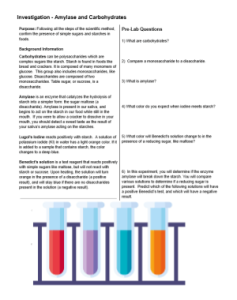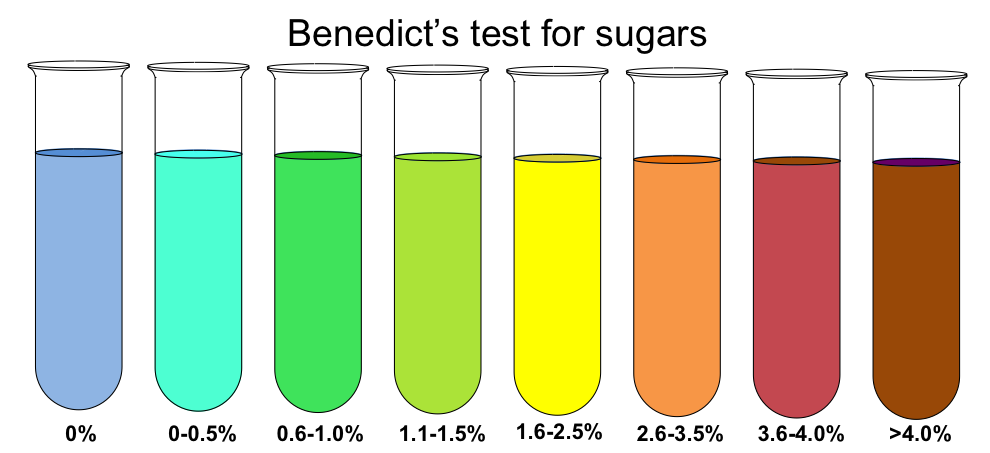
Are you looking for a way to give students a hands-on activity on biological macromolecules? This unit can be daunting for biology students because there is so much chemistry. This activity gives students a break from the vocabulary emphasis of the chapter and gets them into the lab and working with carbohydrates.
Though I don’t cover enzymes until a later unit, this lab gives students a sneak-peak into the world of enzymes. They explore how the enzyme in saliva breaks down complex carbohydrates (starch) into simple reducible sugars. Students add samples to test tubes and use the iodine as an indicator to confirm the presence of starch. Iodine will turn from orange to purple.
Once students have established the presence of starch, they attempt to answer the experimental question: “How does amylase in saliva help break down the starch in your food?”
The step-by step procedure outlines a series of steps where students add Benedict’s solution to samples of starch, where one has amylase added to the sample. This breaks down the carbohydrate into reducing sugar, maltose, which will be positive for reducing sugars. This test tube, when heated, will turn from blue to orange. The starch sample without the amylase will remain blue, because Benedicts does not react with starch. They also have a positive control to test, basic glucose.
Students perform the tests and record color changes in the data table, which also includes a summary for what each test result means. The lab includes an analysis section which covers the basics of the lab and what they learned. A final question references genetic differences in the AMY1 gene across populations. Students must design an experiment to test copy number variations (CNV).
I have this lab available in two versions: Google Doc format and a Canva document. If you use Canva, you can copy this to your account for printing and editing.
The Good and the Bad
This lab is simple for students to conduct in a single 50 minute class period. The materials are fairly easy to obtain from biological supply companies and even Amazon. The downloadable worksheet has links to Amazon supplies. If you have a well-stocked lab, you probably have these chemicals on hand. Benedict’s solution is fairly cheap and they don’t need a lot of it. Warning, make sure you get the “qualitative” Benedict’s solution!
Unfortunately, the set-up for this lab can be quite time-consuming. Each station will need 5 test tubes, test tube racks, and a hot water bath. I use hot plates and large beakers for the hot water bath. Distributing the chemicals to each station is more challenging. I’ve found that using 50 ml centrifuge tubes is a good way to distribute chemicals to groups. (I use these tubes in lots of labs!)

Related Resources
AP Biology Class Site – includes resources for all units in this class
Class Slides on Macromolecules and Protein Structure – for class presentations
Investigation – Using Indicators to Solve a Murder – students test samples taken from the stomach of fictional victims to determine their last meals.
Macromolecules – Testing for Starch – a simpler activity for beginning biology students to test different solutions


5 Comments
https://shorturl.fm/xK5hp
https://shorturl.fm/mlkhZ
https://shorturl.fm/XHcuH
hi3t2f
p0zdgf